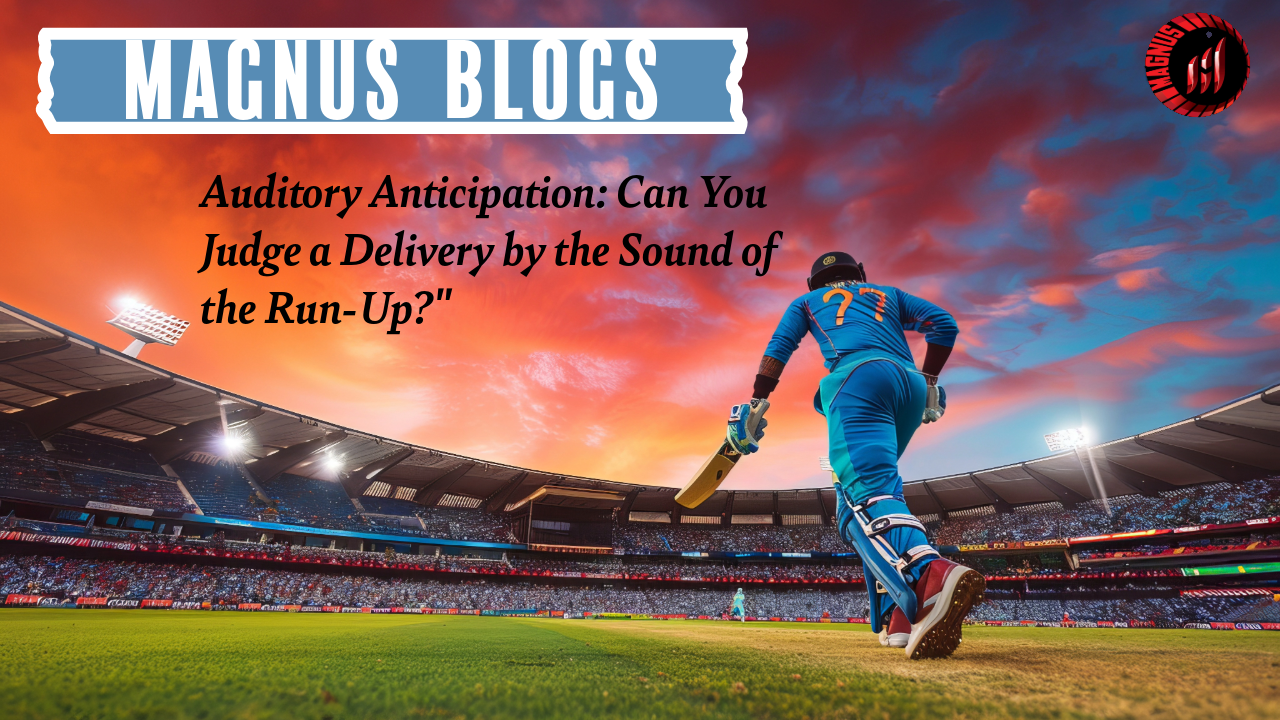Cricket is often hailed as a game of sight — seeing the ball early, reading the field, and watching the bowler’s release. But what if your ears play a bigger role than you think?
Could a batter predict the nature of a delivery just by the sound of a bowler’s run-up? This may sound far-fetched, but auditory cues are a hidden layer of real-time data used subconsciously by many elite players.
In this blog, we explore how rhythm, tempo, and sound signatures from the run-up could offer clues about pace, intent, and deception — all before the ball even leaves the bowler’s hand.
1. Sound in Cricket: An Underrated Sense
Most players focus heavily on visual feedback: seam position, arm speed, pitch behavior. But from the moment a bowler starts moving, the ears start receiving subtle but continuous information:
-
Footfall rhythm
-
Speed buildup
-
Ground texture sounds
-
Breathing patterns
-
Audible grunts or yells
These elements can reveal tempo changes, stride force, or delivery intent, even without looking.
2. The Signature of a Run-Up
Just like voices, every bowler has a unique sound signature when they run in. You may notice:
-
A smooth, gliding bowler like Glenn McGrath had consistent, light footsteps.
-
A bowler with explosive pace, like Shoaib Akhtar, had heavy thuds and quick buildup.
-
Spinners often have softer, quicker steps, with a sudden stop.
Experienced batters learn to associate these sounds with certain types of deliveries. For instance:
-
A quicker-than-usual rhythm may mean a bouncer or surprise yorker.
-
A delayed last step might signal a slower ball or variation.
-
A longer-than-usual stride could indicate a change in grip or tactic.
3. Reaction Time Begins Before Release
We often assume reaction begins after the ball is delivered. But elite batters start processing delivery intent during the approach. This is part of what gives greats like AB de Villiers or Steve Smith that “extra second.”
Sound acts as a pre-visual trigger, helping the brain prepare for:
-
Back foot vs front foot positioning
-
Shot selection range
-
Anticipated bounce or speed
4. Training the Ear: A Lost Art?
While coaches focus on sight and mechanics, auditory training is rarely emphasized. Yet, legendary players often say:
“I could feel something was different in his run-up.”
This instinct isn’t magic. It’s pattern recognition through repeated exposure to sound — a skill that can be sharpened.
A training idea: Batters could close their eyes and listen to various run-ups in practice to try identifying bowlers or pace shifts. This builds auditory memory and match-readiness.
5. Psychological Warfare Through Sound
Bowlers can also use sound tactically:
-
Grunting or stomping can be used to intimidate or disrupt rhythm.
-
A deliberately varied run-up rhythm can mask a slower ball.
-
Sudden silence or exaggerated noise may draw a batter’s focus away from the release.
Understanding these mind games allows batters to stay grounded and separate signal from noise.
6. Real-World Insights from Professionals
Some wicketkeepers and slips say they can often predict pace or swing by hearing the bowler’s shoes skimming or digging into the turf.
Likewise, former players have mentioned they knew a slower ball was coming “because his footsteps sounded hesitant.”
It’s not about magic ears — it’s deep sensory familiarity built over hours of exposure.
Cricket is not just a game of eyes and hands. It’s a game of ears, timing, and subconscious rhythm. Listening to a bowler's run-up might never replace watching their hand, but it could be the missing 5% that separates a mistimed edge from a perfect pull.
So the next time you face a bowler, don’t just watch. Listen. The game might be telling you more than you realize.
Cricket bat types, Cricket equipment in usa, Cricket equipment store, Cricket gloves, Cricket helmet, Cricket kit bags, Cricket retailers, Durable cricket gloves, English willow bats, Icc approved helmets., Kashmir willow cricket bat, Latest kashmir willow bat
